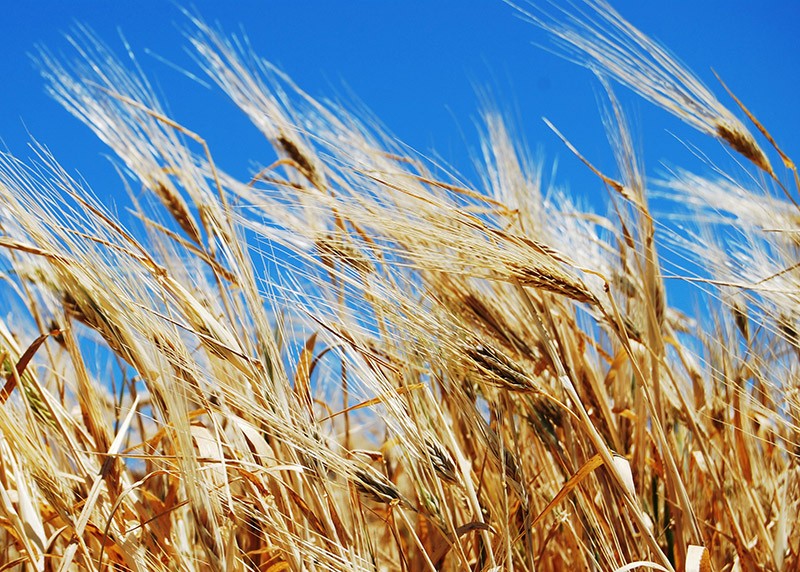Playing the grain game
It is difficult to discern the future of the world’s grain and cereal market when so many conflicting reports exist.
The world grain and cereal market is currently in something of a strange phase. While the statistics generally bring with them optimism, reports from around the world indicate that not everyone is having success with the commodity.

A look at the figures suggests that there is plenty to smile about when it comes to the world’s future cereal and grain trade, good news for bulk carrier operators. According to the latest International Grains Council’s (IGC) Grain Market Report, the second biggest total grains harvest in history is forecast for 2017/18. The IGC also said that stocks are likely to fall for the first time in five seasons amid lower supplies and strong demand.
Total grains trade is anticipated to hit a new peak, with this trend being led by increased maize demand. World soybean trade is improving too – according to the IGC, global trade in the commodity is seen increasing by 4% year-on-year to a new high, with China’s imports close to 100m tonnes. Though global rice trade could reduce slightly next year, at about 43m tonnes, volumes would still be well above average, the IGC explained.
According to the IGC, each year from 2014/15 (taking account of estimates for 2016/17), total grains production has increased. Although the latest forecast for production was lower than 2016/17’s estimated 2.13bn tonnes, at 2.08m tonnes, it is still significantly higher than the figures for 2014/15 and 2015/16 respectively.
Gloomier statistics resonate with pictures painted by those who trade in the commodity around the world
However, in 2017/18, global total grains production (comprising wheat and coarse grains) is forecast to be 2.08bn, down by 3% year-on-year. Most of the change from before is for maize, with this including an upward revision for the US crop. Increased feed or residual use (mainly from the US, EU, Canada, Russia and China) will absorb part of the supply boost, the IGC said.
The gloomier statistics resonate with pictures painted by those who trade in the commodity around the world. In late November, the EU awarded 34,704 tonnes of wheat imports below its tariff-rate quotas. Additionally, in November, there were reports that wheat sales to some of Australia’s traditional big buyers in Africa had slumped. Furthermore, although Brazilian grain exporters’ association Anec recently revised upwards its corn exports forecast for this year, director general Sérgio Mendes said that the performance of the Anec companies might “be the worst in a decade” and called this year’s results “disastrous”.
Happy times ahead?
Despite concerning reports, the Food and Agriculture Organization of the United Nations (FAO) painted a generally stable picture of the 2017/18 season with regards to the world’s trade in cereal and products. The agency said that global cereal markets will likely be “comfortably balanced” for the period, with total supplies exceeding anticipated demand and inventories increasing. The FAO anticipated trade in cereals in 2017/18 to stay near to the 2016/17 estimated volume, with a predicted reduction in wheat trade largely offset by bigger shipments of maize, rice and sorghum. It should be noted here that Thai rice exports have recently topped 10m tonnes this year in line with a government target, though Thailand’s commerce minister said that shipments are predicted to increase further when an agreement to sell to Bangladesh is settled.
With regards to cereal production, the FAO forecast 2017’s world production figure to slightly exceed 2016’s peak. It also anticipated total production of coarse grains to hit a new record, with most of the expansion taking place in South America and Southern Africa. However, despite an upward adjustment since October, motivated by a larger-than-previously-expected harvest in the Russian Federation, total wheat production was anticipated to be slightly smaller than the figure of the year before. This, the FAO said, mainly reflected a lower harvest in the US plus an expected reduction in Australia’s wheat crop after a record output in 2016. Positively, the FAO did, however, forecast that the world’s rice production in 2017 would stay “broadly stable”.
The organisation also provided their figures on world cereal stocks, anticipating that they would reach a record level by the close of season next year. According to the organisation, global wheat inventories are currently pegged at a record high, along with world stocks of rice and coarse grains.
“The increase in wheat and rice stocks largely reflects an anticipated accumulation of inventories in China, whereas for coarse grains, the expansion reflects higher end-of-season maize stocks in South America and the United States,” it said.
“Overall, given the ample size of export supplies, competition among major exporters in 2017/18 is expected to remain stiff,” it concluded.
A possible accelerator
There are other factors, however, that could propel the grain trade sky-high. In late November, it was reported that a team of scientists in Spain had managed to create a low-gluten strain of wheat that could help people who suffer from coeliac disease. If scientists do manage to make a wheat that is safe for all coeliacs to consume and this development takes off in a big way, those involved in the grain trade in shipping might find themselves with a whole new commodity to work with.